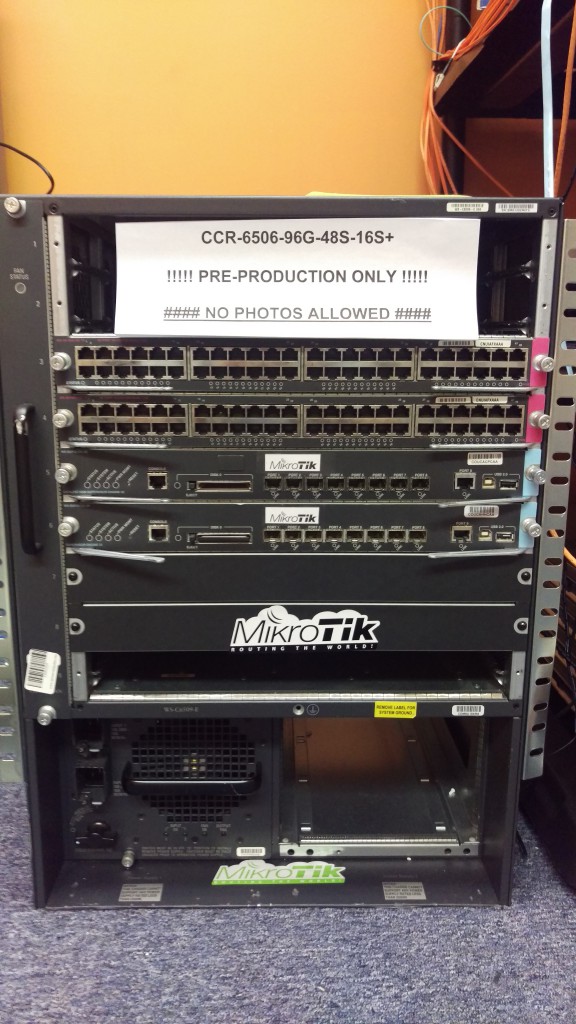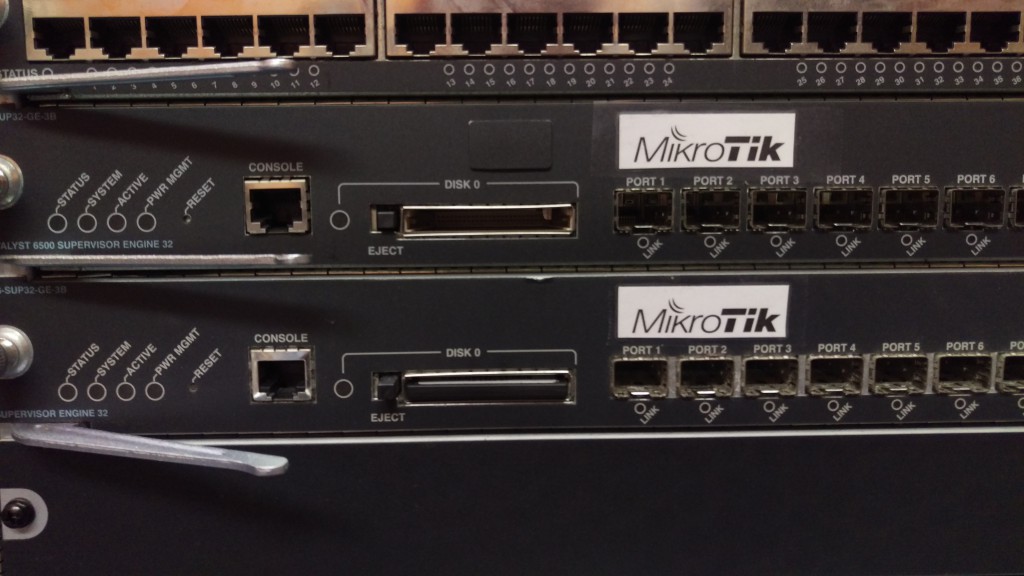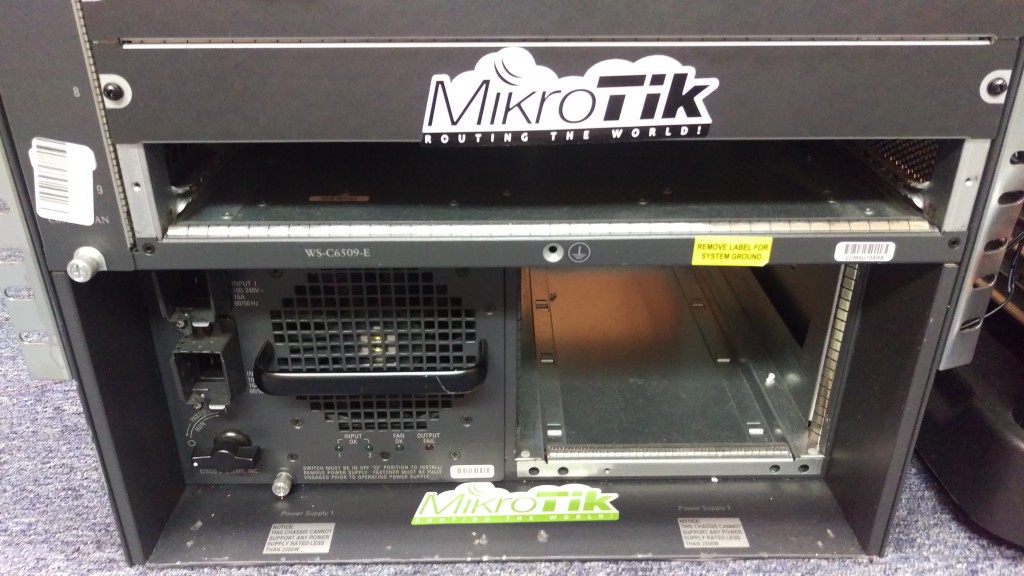Your Docker Agenda for April
Thank you Docker community for your amazing collaborations last month! In March, the community organized over 125 Docker Birthday #3 local trainings and celebrations. This month, you can still catch a few more birthday events and lots of other awesome … ContinuedThe Candy Jar Effect

When I first started in Cisco TAC, as a lowly grade 3 engineer taking hardware RMA calls, I didn’t know anyone. I had just moved to North Carolina, we hadn’t found a church yet, I’m not the most social person on the face of the earth (in fact, if anything, I’m antisocial), and I was sitting in a cubicle surrounded by people who’d been working in serious networking for a lot longer than I had. Not only that, but a lot of them were a lot smarter than I was (and still are). These people were really busy; it was hard to sip from the firehose, and I really needed to find my way around. How could I go about building a network?
What to do… ??
I put a candy jar on my desk, and filled it with interesting candy. How would a candy jar work? Well, it attracted all sorts of interesting people to my desk throughout the day, and as I got to know what different people liked, it gave me an excuse to bring stuff to their desk—along with a question about a case I was working on, of course. In a sense, I learned all I Continue reading
Photos leaked for new CCR-6506-96G-48S-16S+
So photos have been leaked (we can’t say from where exactly) for the newest experimental router from MikroTik. We don’t know much about it yet except it will be the largest router MikroTik has ever built and is currently designated as CCR-6506-96G-48S-16S+.
Rough specs are:
- 6 slot chassis
- Dual redundant 720 Gbps CPU modules
- Dual power
- 96 ports of copper 1 gig
- 48 1 gig SFP ports
- 16 Ten gig SFP+ ports
Apparently this device will coincide with the release of RouterOS version 8 in 2026 [an inside source at MikroTik named “Janis” confirmed this is a realistic target date.]
Many covert mAP-quadcopters died to bring us this information…these photos are NOT for public distribution.



And if you haven’t quite figured it out yet…APRIL FOOLS DAY!!!! But seriously MikroTik….we need this router. 
Photos leaked for new CCR-6506-96G-48S-16S+
So photos have been leaked (we can’t say from where exactly) for the newest experimental router from MikroTik. We don’t know much about it yet except it will be the largest router MikroTik has ever built and is currently designated as CCR-6506-96G-48S-16S+.
Rough specs are:
- 6 slot chassis
- Dual redundant 720 Gbps CPU modules
- Dual power
- 96 ports of copper 1 gig
- 48 1 gig SFP ports
- 16 Ten gig SFP+ ports
Apparently this device will coincide with the release of RouterOS version 8 in 2026 [an inside source at MikroTik named “Janis” confirmed this is a realistic target date.]
Many covert mAP-quadcopters died to bring us this information…these photos are NOT for public distribution.



And if you haven’t quite figured it out yet…APRIL FOOLS DAY!!!! But seriously MikroTik….we need this router. 
Come Geek Out With The Original Inventor of DNS at CloudFlare

We like DNS, we think you might too.
CloudFlare and Gandi are hosting a three-part series on DNS. Our first event will be at the CloudFlare office with Paul Mockapetris, the original inventor of the Domain Name System.
Beyond inventing DNS, Paul built the first ever SMTP server. He ran networking at ARPA, served as the chair of the IETF, and is a honored member of the Internet Hall of Fame. He is currently the Chief Scientist at Threatstop, and the visiting scholar at the Universite de Pierre et Marie Curie in Paris.
The event is on Tuesday, April 12th, 2016 at 6 PM PST at our office in San Francisco, 101 Townsend Street (RSVP here). We’ll be covering the early days of DNS, DNS and security, the commercialization of DNS (what Paul famously calls DN$), and the future of DNS.
So come, grab some beer, and hang out with people who like DNS as much as you do.
Docker Online Meetup #36: Docker for Windows and Mac
Docker for Mac and Docker for Windows are integrated, easy-to-deploy environments for building, assembling, and shipping applications from Mac or Windows. Docker for Mac and Windows contain many improvements over Docker Toolbox. During this week’s Docker Online Meetup, Product Managers … ContinuedStuff The Internet Says On Scalability For April 1st, 2016
Hey, this is no joke, it's HighScalability time:

A glorious battle in EVE. Tens of thousands of pilots fighting tens of thousands of pilots in a real time all on a single shard.
- $9.3B: punishment for Google's temerity of using Java; 200: computer scientists and neuroscientists at Google’s DeepMind; 22: cores in Intel's new Xeon E5-2600 V4 CPU; 12: fold boost in spectrum efficiency over current 4G cellular technology using a massive antenna system;
- Quotable Quotes:
- Linus Torvalds: I’m not a big visionary. I’m a very plodding pedestrian engineer, and I try to keep my eyes firmly on the ground. I’ll let others make the big predictions about where we’ll be in 5, 10 or 25 years
- theymos: "Core" doesn't think anything because it's not any sort of unified organization.
- whalesalad: We are running Kubernetes in production at FarmLogs and LOVE it.
- @StackPointCloud: The operational complexity associated with monitoring containers is multiplied given the 1:N relationship of host:containers. #NYCK8s
- hu6Bi5To: AWS is significantly more expensive like-for-like, but it's worth remembering that you wouldn't architect your whole system that way if Continue reading
Fibre Channel in the Cloud: FCaaS
Public cloud providers such as Amazon Web Services, Microsoft Azure, and Rackspace, as well as private cloud systems such as OpenStack, have dominated the computing landscape for the past several years. And once a joke of a marketing term (remember Larry Ellison’s super villain-monologue on the topic?), the cloud is now A Thing, with a definition and everything.
One technology that seemed like it was getting left behind in all these cloud games, however, was Fibre Channel. Ephemeral compute nodes, object storage, extreme scale, elastic provisioning — all of these were characteristics that were initially thought to be bad fits for Fibre Channel.

Sad Fibre Channel is Sad
As it turns out, Fibre Channel is right at home in the cloud.

Amazon Web Services has recently rolled out Fibre Channel as a Service (FCaaS), as have Rackspace, Digital Ocean, and Microsoft Azure.
All of those public cloud providers have some sort of block storage offerings, but they’re typically based on something like iSCSI or another back-end block protocol. Customers have been demanding the kind of block storage in the public cloud, where they can control zoning and zonesets, just like they do in their traditional data centers worlds.
The Continue reading
Worth Reading: Are we headed to another bust?

The post Worth Reading: Are we headed to another bust? appeared first on 'net work.
HPE Injects New ‘Persistent’ Memory Into Server Race
HP Enterprise unveiled Gen9 Proliant servers with a non-volatile form of memory modules that extend server memory
Packet Blast: Top Tech Blogs, Apr. 1
We collect the top expert content in the infrastructure industry and fire it along the priority queue.
Announcing Docker Hub Classic
As we passed 2.5B pulls on Docker Hub recently, we were proud but we were also concerned. What if we’re simply using too much of the Internet for Docker? We certainly wouldn’t want to get in the way of … ContinuedLate Breaking: Cisco Switches to Arista
The legal feud between Cisco and Arista may finally be over, though perhaps not in the way any of us had expected.


The news starting to filter out of San Jose this morning is that Cisco has agreed to drop its lawsuit in return for the immediate acquisition of Arista Networks’ assets, intellectual property and employees. After the ITC’s initial determination last month that Arista had infringed on three out of five patents listed in the suit, it is understood that this solution was urgently brokered to protect the company’s employees from the potential fallout should the ITC’s next ruling be less than favorable.
Sources close to Cisco CEO Chuck Robbins are saying that Cisco plans to rebrand Arista’s impressive 7500 switch hardware as the new flagship Cisco Nexus 8000 series. With its reassuringly familiar command line interface, Arista’s EOS should be a seamless addition to Cisco’s impressive existing portfolio of network operating systems (i.e. IOS, Native IOS, IOS-XR, IOS-XRv, IOS-XE and NXOS) and customers will likely be lining up to deploy the impressive new Nexus 8000 series hardware without having to suffer through the pains of the usual new product learning curve.
In some ways the timing of Continue reading
TFTP via VRF
How does Internet work - We know what is networking
As you can see from my article list, I’m going through some VRF configuration in the last few weeks I ran into this today and it sounded interesting enough to share it with you. The issue with TFTP IOS image copy to flash when having all interfaces in specific VRF and no interface in Global Routing Table. Long story short, you kick in this command for normal IOS download to the router: R1#copy tftp://10.10.10.11/c890-universalk9-mz.154-3.M5.bin flash: Destination filename ? Accessing tftp://10.10.10.11/c890-universalk9-mz.154-3.M5.bin... %Error opening tftp://10.10.10.11/c890-universalk9-mz.154-3.M5.bin (Timed out) …and it isn’t working of course. The issue is in having all interfaces member of
IETF and an “Acid” Testing Suite
Since I roundly dumped all over the IETF I’ve been thinking how the IETF could improve. My current best idea is “testing”.
The post IETF and an “Acid” Testing Suite appeared first on EtherealMind.